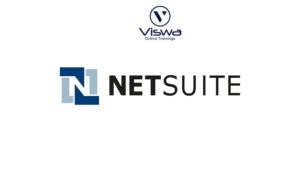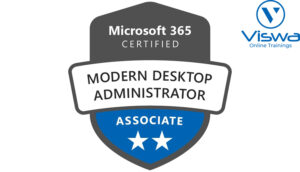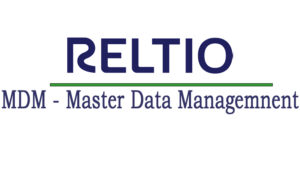SQL Server DBA Certification Training
One of the top providers of online IT training in worldwide is VISWA Online Trainings. To assist beginners and working professionals in achieving their career objectives and taking advantage of our best services, we provide a wide range of courses and online training.
Learners : 1080
Duration : 30 Days
About Course
Our SQL Server DBA training from in-person, certified instructors covers fundamental to advanced database administration tasks, such as capacity planning, query tuning, index management, database maintenance, high availability (HA), disaster recovery (DR), Query Store, in-memory tables, database repairs, page repairs, jobs, alerts, resource management, and security management. It also covers Azure SQL DBA tasks like Azure Sync, Azure Server Failover, Azure Virtual Machines, and Azure DBA. Enrol right away to get certified.
SQL Server DBA Training Course Syllabus
✔ SQL Server DBA 2019 Installation
✔ Server Components and Purpose
✔ New features of SQL Server 2019
✔ Service Accounts, Purpose, and Usage
✔ Authentication Modes & Logins
✔ Instance Configuration Options
✔ Management Studio (SSMS) Tool Usage
✔ Troubleshooting the failed Instance
✔ Establishing Downtime For Maintenance
✔ Service Packs and Patch/hotfix Activities
✔ Pre & Post Database Maintenance Activities
✔ Steps for doing the Side-by-Side Migration
✔ Migration with Backup and Restore Method
✔ Migration of the Logins and Fixing Orphan users
✔ Merits/Demerits of the side by Side Migration
✔ Import and Export utility
✔ Scripts for copying the tables with data
✔ Configuration of the Network Protocols
✔ Dedicated Administrator Connection(DAC) configuration
✔ What is RAID Levels and choosing the Best suited for All DBs
✔ Database Configurations
✔ Attaching and detaching SQL Server DBA
✔ What is TempDB
✔ Corruption of TempDB
✔ How to troubleshoot and avoid common tempdb issues
✔ Starting and Stopping the SQL Server Services
✔ Configuration Manager
✔ Net commands
✔ Command Prompts and SQL CMD
✔ Starting the Dbs in Single-user Mode
✔ What is a database and a database management system (DBMS)
✔ ACID Properties
✔ The Life Cycle of a Query
✔ The Relational and Storage Engines
✔ Recovery
✔ Difference between Checkpoint and LazyWriter
✔ Types of System Dbs
✔ Startup Parameters
✔ Licencing of SQL Server DBA
✔ Pages & Types of Pages
✔ Extents and Types of Extents
✔ Managing Extents
✔ Data Files: Purpose and Storage
✔ Filegroups: Purpose and Usage
✔ Shrinking the log files
✔ File growth and MAXSIZE Options
✔ Scripting Database Structures
✔ Security
✔ Security Architecture
✔ Fixing the Server Roles
✔ Creating Logins
✔ Fixed Database Roles
✔ Database Users
✔ SQL Server Agent and Monitoring the Agent logs
✔ Troubleshooting the Jobs with help of Logs and Event Logs
✔ Steps for creation of Jobs with different steps.
✔ Job Activity Monitor and History Deletes
✔ Database Maintenance Plans.
✔ DB Maintenance Strategies & Schedules
✔ Monitoring tools used for SQL Server Monitoring
✔ Log file Viewer and Maintenace of Log File Viewer
✔ Activity Monitor
✔ Database reports
✔ Monitoring Processes in T-SQL
✔ sp_who and sp_who2
✔ sys.dm_exec_connections
✔ Backups with T-SQL Scripts
✔ Backups Concept and Mechanism
✔ Data Backups – Syntax and Types
✔ Log Backup Mechanism and Use
✔ COMPRESSION, CHECKSUM, and STATS
✔ Scheduling Backups & Strategies
✔ FILELISTONLY and VERIFYONLY Options
✔ COPY_ONLY Backups and Importance
✔ Compatibility, Recovery Model Options
✔ Working with Recovery Models & Backups
✔ Point-In-Time Restores & Recovery
✔ Overwrite Options for DB Restores
✔ Log Shiping
✔ Log Shipping Overview
✔ Configuration of the Log Shipping
✔ Deploy Log Shiping
✔ DB Mirroring Architecture & Use
✔ Mirroring Configuration Scenarios
✔ Backups & Restores for Mirrors
✔ Architecture
✔ Availability Group Replicas and Roles
✔ Availability Modes
✔ Types of Failover Supported
✔ Allowing Read-Only Access to Secondary Replicas
✔ Availability Group Example
✔ Configure a New Availability Group
✔ Configure an Existing Availability Group
✔ AlwaysOn Group Dashboard
✔ Understanding SQL Clustering Need
✔ SQL Server Clustering Architecture
✔ Windows Server Installation Options
✔ SQL Server Cluster Installation (VM)
✔ Add Nodes to SQL Server Cluster
✔ Replication Overview
✔ Replication Components
✔ Replication Types
✔ Implementing Replication
✔ Implementing Transactional
✔ Replication Monitor
✔ Understanding the Memory
✔ Windows and Memory
✔ Physical Memory
✔ SQL Server Memory
✔ Understanding Wait Statistics
✔ Locks a currency
✔ Lock Types
✔ Blocking and how to monitor the blocking
✔ DMVs for monitoring the blocking
✔ Table and Index Architecture
✔ Cluster and Non-Cluster indexes
✔ What is Heap
✔ Cluster index structure
✔ Index fragmentation
✔ Common Causes of High CPU Usage
✔ Outdated statistics
✔ I/O
✔ Disks
✔ Performance counters for Disk I/Os
| Live Instructor Based Training With Software |
| Lifetime access and 24×7 support |
| Certification Oriented content |
| Hands-On complete Real-time training |
| Get a certificate on course completion |
| Flexible Schedules |
| Live Recorded Videos Access |
| Study Material Provided |
SQL Server DBA Training - Upcoming Batches
7th NOV 2022
8 AM IST
Coming Soon
AM IST
5th NOV 2022
8 AM IST
Coming Soon
AM IST
Don't find suitable time ?
CHOOSE YOUR OWN COMFORTABLE LEARNING EXPERIENCE
Live Virtual Training
-
Schedule your sessions at your comfortable timings.
-
Instructor-led training, Real-time projects
-
Certification Guidance.
Self-Paced Learning
-
Complete set of live-online training sessions recorded videos.
-
Learn technology at your own pace.
-
Get access for lifetime.
Corporate Training
-
Learn As A Full Day Schedule With Discussions, Exercises,
-
Practical Use Cases
-
Design Your Own Syllabus Based
SQL Server DBA Training FAQ'S
Extents in an SQL server database are the basic unit of measuring space for indexes and tables in the database.
The contents of the page header are – Index of Data and Free Space.
The different types of System Databases include:
- Resource
- TempDB
- Distribution
- Model
- Master
- MSDB
Get ahead in your career by learning SQL Server DBA through VISWA Online Trainings
The syntax used to create an SQL database is – Create database <databasename>
This is one of the most common SQL Server DBA interview questions asked in technical interviews. To create a database with a specific file location, the following command is used:
Restore Database <database name> from disk='<Backup file location + file name>’
Reviews
 Vishnu Gadipudi2023-08-20I Enrolled in VISWA Online Trainings for IBM Integration BUS course . Recently I Completed IBM Integration BUS Batch. It was Really Awesome Experience. Best Place To Learn , Experienced Trainer, Gives Us High Level Knowledge....
Vishnu Gadipudi2023-08-20I Enrolled in VISWA Online Trainings for IBM Integration BUS course . Recently I Completed IBM Integration BUS Batch. It was Really Awesome Experience. Best Place To Learn , Experienced Trainer, Gives Us High Level Knowledge.... Navya Biradavolu2023-08-20I was enrolled for looker Bl Tool,it was amazing experience . especially soft skill batch is one of my favourite batch . overall learning process is quite impressive.
Navya Biradavolu2023-08-20I was enrolled for looker Bl Tool,it was amazing experience . especially soft skill batch is one of my favourite batch . overall learning process is quite impressive. Indla sneha2023-08-20I have joined I have joined VISWA Online TRAININGS for Java full stack course and i have completed Advance Java module. I had a good knowledge of Hibernate, spring,spring boot,spring MVC. Tutor has knowledge in depth and is supportive. Srinadh sir solved all our doubts....
Indla sneha2023-08-20I have joined I have joined VISWA Online TRAININGS for Java full stack course and i have completed Advance Java module. I had a good knowledge of Hibernate, spring,spring boot,spring MVC. Tutor has knowledge in depth and is supportive. Srinadh sir solved all our doubts.... bindu hima2023-08-20I am recently completed Talend course and trainer is Rajendra very professional and helpful. All the doubts were solved in a precise manner.
bindu hima2023-08-20I am recently completed Talend course and trainer is Rajendra very professional and helpful. All the doubts were solved in a precise manner. Tarunasree Gowra2023-08-20"I truly enjoyed this course." Chaitanya sir fantastic-very knowledgeable. Sir give us very informative and clear instruction on how to achieve the goal. Thank you!
Tarunasree Gowra2023-08-20"I truly enjoyed this course." Chaitanya sir fantastic-very knowledgeable. Sir give us very informative and clear instruction on how to achieve the goal. Thank you! Tejaswini Kommu2023-08-20Overall Linux Admin sessions batch was very good. Mr. RAM Krishna teaching was very helpful to remind our basic concepts in linux & networking.
Tejaswini Kommu2023-08-20Overall Linux Admin sessions batch was very good. Mr. RAM Krishna teaching was very helpful to remind our basic concepts in linux & networking. Gopanaboina Mounika2023-08-20It was great learning with such a great and experienced staff. Praveen Sir (Oracle EPM Cloud - FCCS) was very helpful and operations team also very helpful in solving any minor problems students go through process.
Gopanaboina Mounika2023-08-20It was great learning with such a great and experienced staff. Praveen Sir (Oracle EPM Cloud - FCCS) was very helpful and operations team also very helpful in solving any minor problems students go through process. Jyothi Gutlapalli2023-08-20I like to share my experience which provide lots of courses and one of those I recently completed my Salesforce BA Course and I like to tell you it was a great experience and my knowledge and confidence is really boosted after completing this course.
Jyothi Gutlapalli2023-08-20I like to share my experience which provide lots of courses and one of those I recently completed my Salesforce BA Course and I like to tell you it was a great experience and my knowledge and confidence is really boosted after completing this course. Harshibandi2023-08-20Good experience and great learning platform for Hyperion Essbase and Planning. The faculty is also well trained and soft spoken.
Harshibandi2023-08-20Good experience and great learning platform for Hyperion Essbase and Planning. The faculty is also well trained and soft spoken. Chaitu Viswa2023-08-20It was very good session for QlikView. I would like to thank to teacher Mr.Chandu for providing guidance for the required modules. Thanks VISWA Team for giving apportunity to leran new skills.
Chaitu Viswa2023-08-20It was very good session for QlikView. I would like to thank to teacher Mr.Chandu for providing guidance for the required modules. Thanks VISWA Team for giving apportunity to leran new skills.




